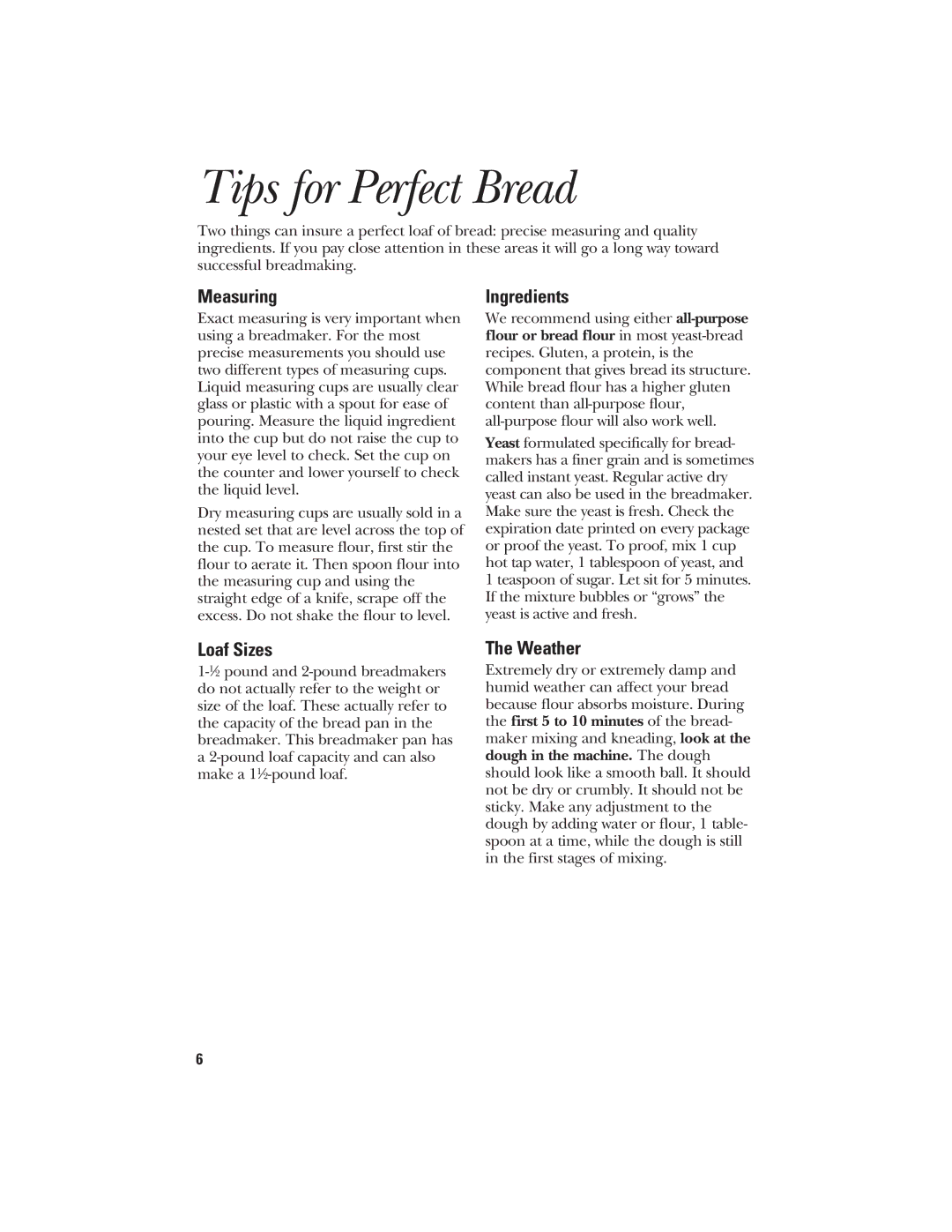
Tips for Perfect Bread
Two things can insure a perfect loaf of bread: precise measuring and quality ingredients. If you pay close attention in these areas it will go a long way toward successful breadmaking.
Measuring
Exact measuring is very important when using a breadmaker. For the most precise measurements you should use two different types of measuring cups. Liquid measuring cups are usually clear glass or plastic with a spout for ease of pouring. Measure the liquid ingredient into the cup but do not raise the cup to your eye level to check. Set the cup on the counter and lower yourself to check the liquid level.
Dry measuring cups are usually sold in a nested set that are level across the top of the cup. To measure flour, first stir the flour to aerate it. Then spoon flour into the measuring cup and using the straight edge of a knife, scrape off the excess. Do not shake the flour to level.
Ingredients
We recommend using either
Yeast formulated specifically for bread- makers has a finer grain and is sometimes called instant yeast. Regular active dry yeast can also be used in the breadmaker. Make sure the yeast is fresh. Check the expiration date printed on every package or proof the yeast. To proof, mix 1 cup hot tap water, 1 tablespoon of yeast, and
1 teaspoon of sugar. Let sit for 5 minutes. If the mixture bubbles or “grows” the yeast is active and fresh.
Loaf Sizes
The Weather
Extremely dry or extremely damp and humid weather can affect your bread because flour absorbs moisture. During the first 5 to 10 minutes of the bread- maker mixing and kneading, look at the dough in the machine. The dough should look like a smooth ball. It should not be dry or crumbly. It should not be sticky. Make any adjustment to the dough by adding water or flour, 1 table- spoon at a time, while the dough is still in the first stages of mixing.
6
